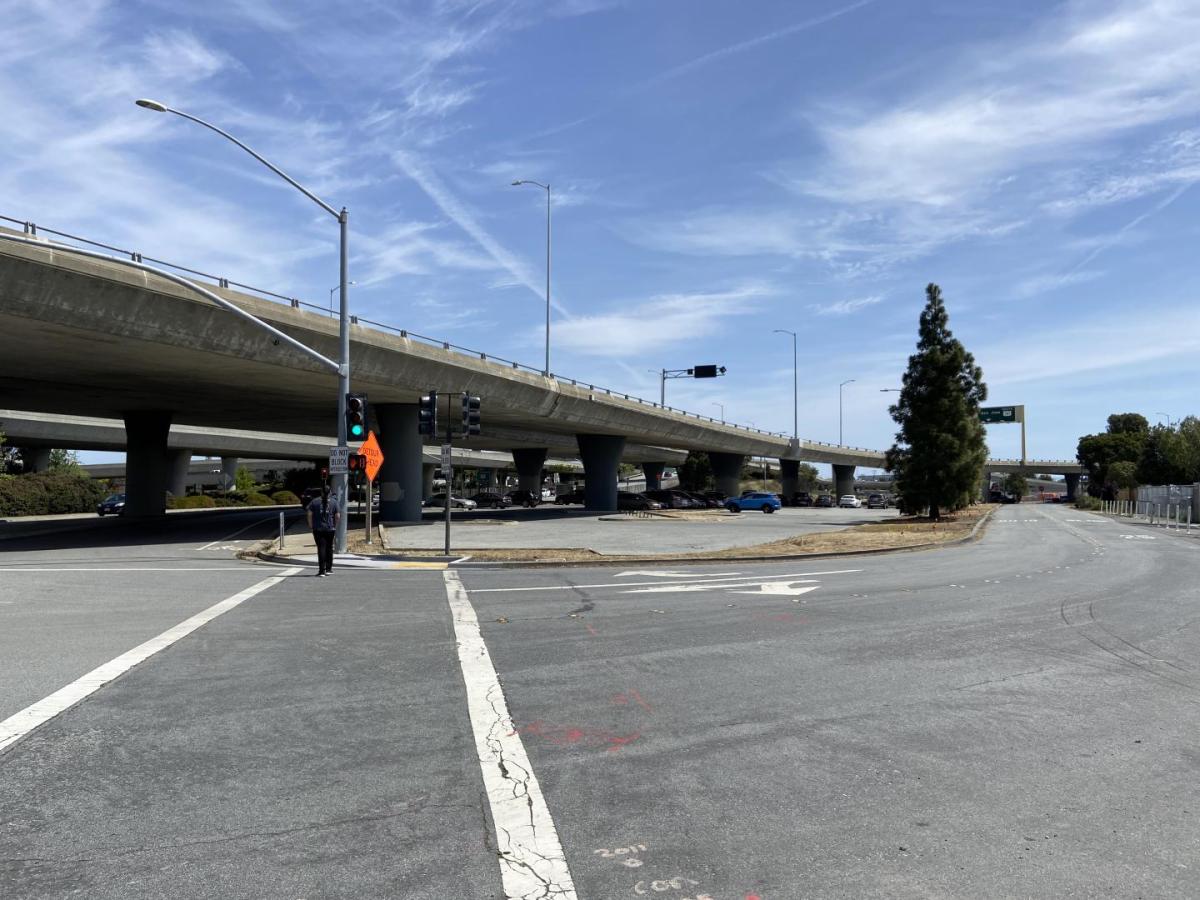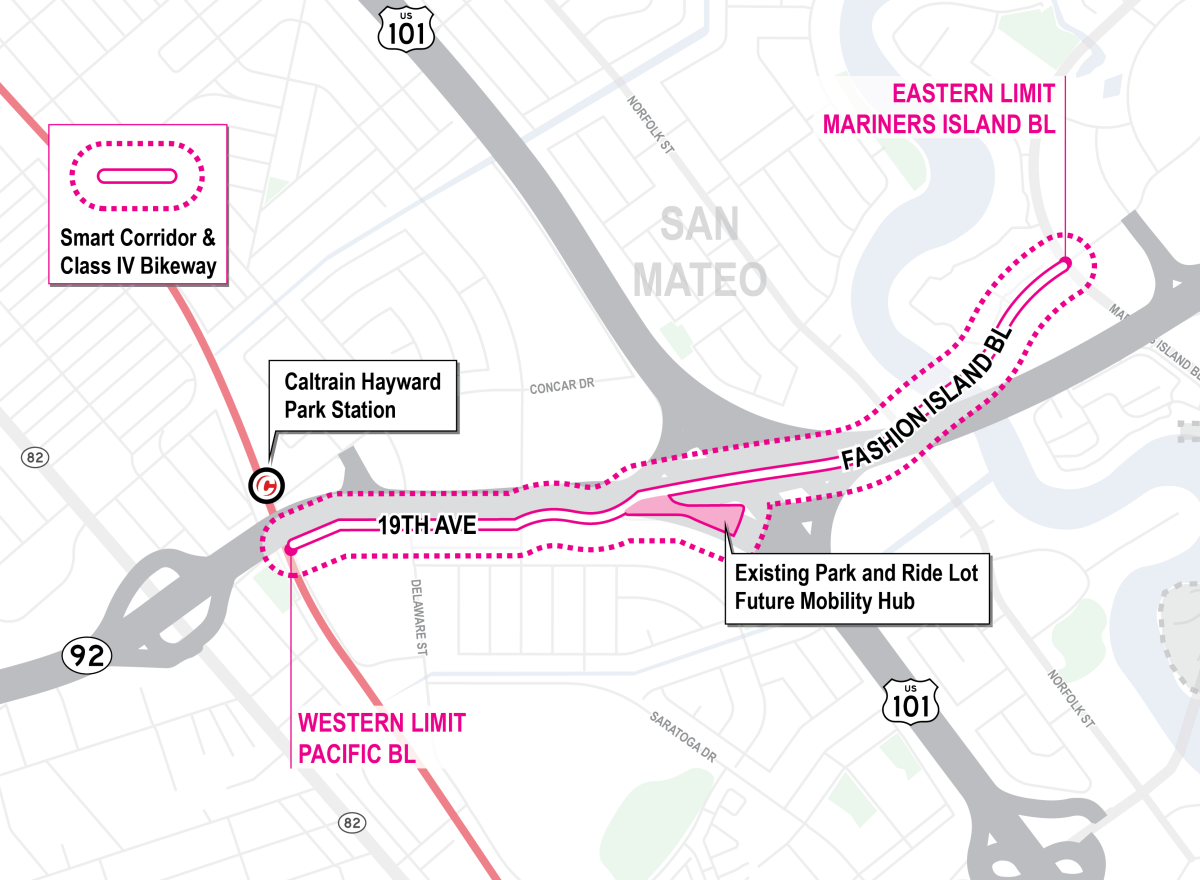
Park & Ride lot at the junction of highways 101 and 92 in San Mateo
MOBILITY HUB/SMART CORRIDOR
A plan to expand transportation options near the busy Highway 101 and Highway 92 interchange is currently in the works. It’s envisioned as a place where transit, bikes, pedestrians, and other forms of mobility all seamlessly connect for both local and long-distance trips.
NOTE: An online survey for the project is only open until Sept. 15 and is available in English, Spanish and simplified Chinese. Fill out the survey to share your priorities for the project!
Safety, equity and sustainability are just a few of the primary goals for this initiative, known as the US 101/SR 92 Mobility Hub & Smart Corridor project.
The project is being led by the city of San Mateo, SamTrans and the San Mateo County Transportation Authority (TA).
“We’re excited for the opportunity to collaborate with our regional partners on initiatives like the Mobility Hub and Smart Corridor that can improve safety, reduce our impact on the environment, and provide increased accessibility to sustainable transportation options,” said the city of San Mateo Principal Transportation Planner Sue-Ellen Atkinson. “We're looking forward to working with the TA and SamTrans on this exciting project and sharing with the public what the project could look like.”

The mobility hub is envisioned where the existing Caltrans Park and Ride lot currently sits beneath the junction of highways 101 and 92. The two main streets that feed into the hub, 19th Avenue and Fashion Island Boulevard, will serve as a smart corridor. Public Wi-Fi, adaptive streetlights, and traffic and air-quality monitoring are possibilities for the project. Also, smart features like parking, benches and trash cans could be incorporated into the design.
A class IV bikeway could provide bicycle access to the hub and Caltrain’s Hayward Park Station. This level of design separates cyclists from vehicular traffic with curbs, planters, elevation changes or bollards. A complete-streets design would also improve safety elements for all forms of transportation, including walking.
Retail and community spaces are also among the options being considered to enhance the project.
The team is nearing the end of the first major round of community engagement and will begin work on developing design alternatives for both the Smart Corridor and the Mobility Hub to share with community members early next year.
Once a preferred design alternative is chosen this coming spring, a final plan will be completed and shared with the public and the project team will dive into the next phase of work.